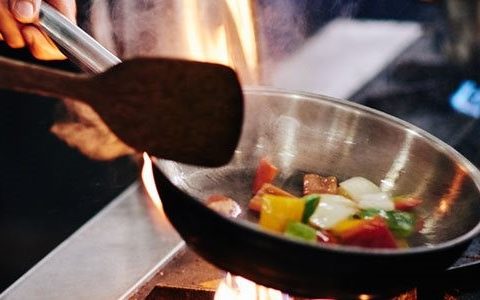The Best Frying Pans for Your Kitchen: Types and Maintenance Tips
The taste of your food depends not only on the ingredients you use but also on the cookware you choose. Even the most creative and talented cooks can’t achieve the desired results without the proper tools—especially the right frying pan.
With so many options available and limited kitchen space, it’s important to choose wisely. Knowing which pans are essential and how to care for them can save you time, space, and frustration.
Types of Frying Pans
Universal Frying Pan
As the name suggests, it’s a versatile pan suitable for almost any dish. Durable and easy to clean—even with a steel scrubber—it’s typically made of aluminum, copper, or steel. While practical, it may not enhance flavors the way specialized pans like a wok do.
Wok
The wok is perfect for vegetables, ideal for stir-frying with very little oil. Its high sides and large capacity make it great for cooking healthy, flavorful meals. Though made for veggies, it also works well with poultry, seafood, or fish.
Grill Pan
Designed for oil-free cooking, the grill pan features raised ridges that mimic a grill. It’s large enough to cook multiple ingredients at once—sausages, followed by vegetables—without flavor transfer.
Crepe Pan
Crepes require a dedicated pan: flat, round-edged, and coated with non-stick material to avoid burning. A must-have if you want perfect, golden crepes every time.
Specialty Pan
For dishes like paella or vegetable sautés, a specialty pan enhances both presentation and taste. There are variants for fish, omelets, and other niche preparations.
Deep Frying Pan
Ideal for one-pot meals like stews, sauces, or sautéed vegetables. It features high walls and non-stick coatings to prevent burning and allow thorough cooking.
Egg Frying Pan
Designed with separate molds for each egg, this pan ensures perfect shape and even cooking. Some models come with a lid for bain-marie style eggs.
Professional Frying Pan
Heavier and more expensive, professional pans offer superior quality and longevity. Their sturdiness and heat retention make them a worthy investment for serious cooks.
How to Choose the Best Frying Pan
Type
If you’re not a passionate cook, start with a universal pan and a cast iron one. Avoid large pan sets with items you’ll never use.
Diameter
Pick based on cooking quantity. Larger pans are harder to handle and take up more space. A 26–28 cm diameter is a balanced choice.
Material
Aluminum and sheet metal are affordable but wear quickly. For durability and better heat control, choose steel, cast iron, or copper.
Weight
Heavier pans generally indicate higher quality. Cast iron pans, though not light, retain and distribute heat evenly.
Double Base
Thicker and heavier, a double base retains heat longer and distributes it more evenly—great for consistent cooking.
Shape
Round pans are preferred because they ensure even heat distribution. Even grill pans are better in round form for temperature consistency.
Non-Stick Coating
Most pans are coated to prevent food from sticking. Teflon and ceramic are common, but you may also find titanium or resistium coatings.
Thermo-Spot Indicator
This red dot disappears when the pan reaches optimal temperature, helping you cook with precision.
Handle Type
Wood or ebonite handles stay cool, while metal ones heat up. Always check for ergonomic and heat-resistant materials.
Heat Source Compatibility
Gas, electric, ceramic, or induction cooktops require different pans. For induction, the base must be magnetic (check with a magnet).
Accessories
Some pans include lids (metal or glass), spatulas, or anti-splash guards. Always check if accessories are included in the price.
How to Properly Maintain Your Frying Pans – 10 Tips
- Read the manual: You might learn valuable care instructions or cooking limitations.
- Avoid overheating Teflon or ceramic pans: Above 230°C, the coating may crack and release harmful particles.
- Not a lifelong investment: Teflon pans should be replaced every 5 years if scratched.
- Light oil layer: Even for non-stick pans, apply a thin coat of oil before cooking.
- Let it cool before washing: Sudden temperature changes can deform the pan.
- Avoid metal utensils: Use silicone tools for coated pans; metal is okay for standard pans.
- Don’t stack directly: Place a cloth or protector between pans to avoid scratches.
- No wire scrubbers: Use soft sponges and creamy detergents to preserve coating.
- Hand wash preferred: Pans last longer when not cleaned in the dishwasher.
- Clean thoroughly after use: Residual food can affect future meals and leave stains or grease buildup.
Whether you’re a gourmet enthusiast or just cooking out of necessity, having the right pan makes a huge difference. Consider what you cook most often, your heat source, and how much effort you’re willing to put into maintenance. Choose wisely, and your meals will thank you.


